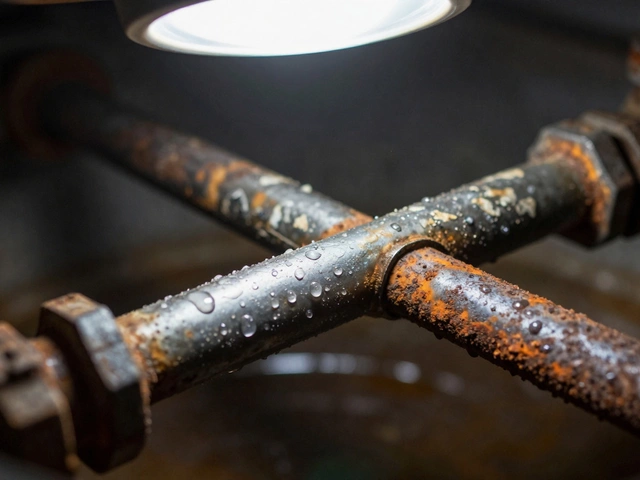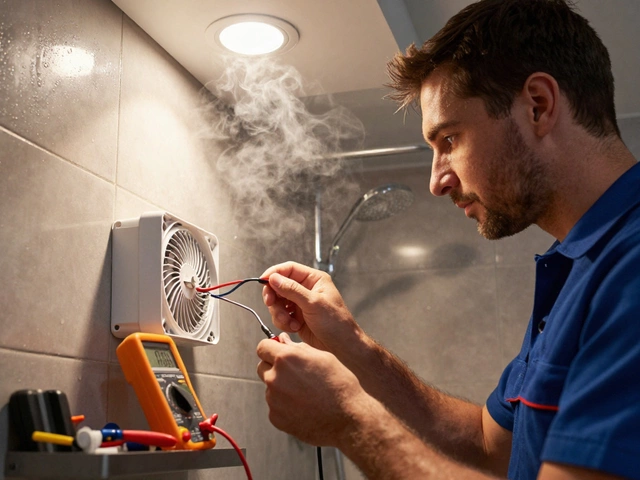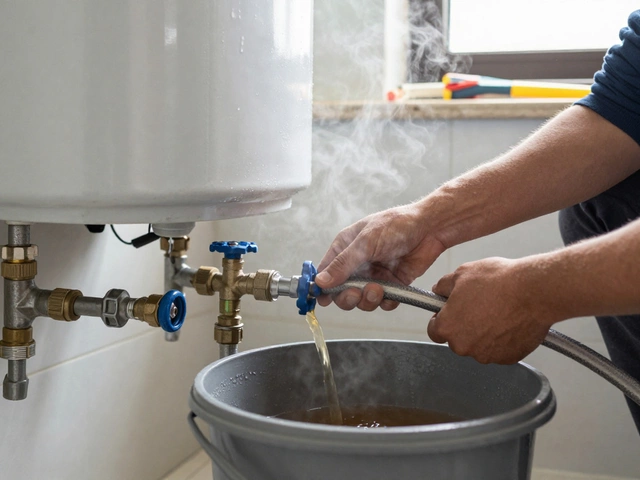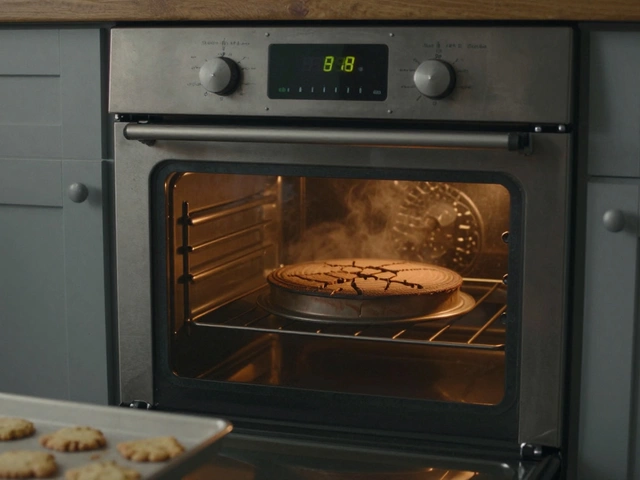So your electric hob just stopped working or is acting up? Annoying, right? Before you panic or reach for your wallet, let’s talk real numbers and what you can actually do about it. Repairing an electric hob isn’t always expensive, but the cost depends on what’s wrong and how old your appliance is. No two problems hit your bank account the same way—sometimes it’s a quick fix, other times you might be halfway to buying a new one.
If you’re dealing with simple stuff like a broken knob or a single ring that won’t heat up, you might spend as little as £40 to £80, especially if it’s just a new part and a quick call-out. But if the hob’s electronics are fried or the glass is cracked, brace yourself; repairs can shoot up to £150 or more. And if you’re living in a big city, expect higher prices because that’s just how it goes with service calls.
Here’s a tip most people ignore: it helps a lot to know the exact brand and model before calling around. Repair folks will usually ask and can give you a more accurate estimate right over the phone. You’ll avoid those extra “diagnosis” fees, which are just a fancier way of saying they want more for their time.
- Common Electric Hob Problems and What They Mean
- How Much Does a Typical Repair Cost?
- Repair vs Replacement: Is It Worth Fixing?
- Ways to Save Money on Repairs
- When to Call a Professional (and Why DIY Sometimes Fails)
Common Electric Hob Problems and What They Mean
Your electric hob repair bill depends a lot on what’s actually wrong, so let’s break down what usually goes wrong and what it means for your wallet and sanity.
Hob rings not heating up? This one’s super common. Sometimes, a single ring goes cold while everything else works fine. That usually points to a busted heating element or a faulty connection under the glass. If every ring is dead, it could be the main control board or a bigger electrical fault. Cheap fixes are often £30–£70 for parts and labor if it’s just one element—more if the electronics are messed up.
Unresponsive touch controls are another headache, especially on newer models. Grease, water, or just plain old age can mess with the sensitive electronics. Sometimes you just need to clean and dry carefully—if not, you’re likely looking at a new control panel or a repair that can cost £100–£150.
Cracked glass on your hob not only looks bad but can be dangerous. Whether you dropped a pan or the glass just gave in, you shouldn’t use the hob until it’s fixed. Manufacturers often charge a lot for replacement glass—think £80–£200, depending on your model. Don’t try gluing it—safety comes first.
Here’s a quick look at how some of the most common hob repair issues stack up cost-wise:
| Problem | Likely Fix | Average Repair Cost |
|---|---|---|
| One ring not working | Replace heating element | £40–£80 |
| All rings dead | Check wiring/control board | £100–£180 |
| Broken knob or switch | Replace part | £35–£70 |
| Touch controls not responding | Clean/replace panel | £80–£150 |
| Cracked glass | Replace glass panel | £100–£200 |
Strange noises or burning smells? Switch off your hob right away. These can be signs of a short circuit or faulty wiring, which can turn into real hazards.
If you notice flickering lights, error codes popping up, or the hob tripping the circuit breaker every time you turn it on, don’t ignore it. These almost always mean something is wrong inside—call a appliance repair expert before cooking turns into a bigger problem.
How Much Does a Typical Repair Cost?
The cost to fix electric hob problems can swing pretty wide depending on what’s broken and which parts are needed. For something simple like a broken control knob, expect to pay around £10 to £30 just for the part—then usually £30 to £60 for the labour if you hire someone local. Knobs and simple switches are at the cheap end of the scale.
But let’s say a ring (also called a burner or zone) won’t heat. Replacing a faulty ring typically costs £45 to £90 for parts and labour combined. If it’s a thermostat or the temperature control board, you’re in the £60 to £120 range. Things get pricier fast if the touch controls or circuit board are gone—plan for £100 to £180, and that’s just an average for UK 2024 prices.
If your hob’s glass is cracked, repairs are rarely cheap. Replacement glass nearly always costs £120 to £200, and finding the right one might even delay the fix. Here’s a quick breakdown to help you get the gist:
| Repair Type | Average Cost (Parts + Labour) |
|---|---|
| Knob/Switch Replacement | £40 - £80 |
| Single Ring Not Heating | £45 - £90 |
| Thermostat/Temp Board | £60 - £120 |
| Touch Control or Circuit Board | £100 - £180 |
| Glass Top Replacement | £120 - £200 |
There’s also the call-out fee—almost every appliance repair company charges this, usually between £40 and £70, and it might get bundled into the total labour if you go ahead with the repair. Big brands like Bosch, Samsung, or Neff might set you back a little more, because their parts are so specific.
If your hob repair costs are at the top end (over £180), it’s smart to compare it to the price of a new hob. Sometimes you’re better off upgrading, especially if your appliance is already getting on in years or out of warranty.

Repair vs Replacement: Is It Worth Fixing?
This is where things get real. Should you pay for electric hob repair, or just bite the bullet and get a new hob? Here’s what most people don’t realize: hobs aren’t like fridges—they rarely last more than 10-12 years even with good care. If your hob is past the 8-year mark, sometimes it makes sense to upgrade instead of investing more cash in something that might need another fix soon.
If your repair is a small one—like a broken switch or a single ring out of action—and the rest of the appliance works great, it’s usually worth fixing. Most appliance engineers agree that if the hob repair costs are less than half of what a new, similar model costs (including installation), then a repair is probably the smarter move.
“A rule of thumb is if the repair costs more than 50% of the price of a new hob, replacement becomes the logical choice,” says Tom Corbin, UK appliance engineer of 17 years.
Let’s put some numbers out there. As of 2025, here’s a basic price comparison for popular electric hob brands in the UK:
| Brand | Average Repair Cost | New Hob Price |
|---|---|---|
| Hotpoint | £80 - £150 | £160 - £350 |
| Bosch | £100 - £180 | £250 - £550 |
| Zanussi | £90 - £140 | £140 - £400 |
Remember, installation fees for new hobs usually run between £60 and £120, and can be even higher if your countertop needs adjusting. Add that to the price of the hob.
- If your electric hob is old, out of warranty, and the appliance repair bill is creeping up, consider skipping the repair and choosing a modern, energy-efficient model.
- If your hob is still pretty new (say, under five years), most brands tend to have spare parts handy, and repair is almost always cheaper and more eco-friendly.
- Think about the hassle factor, too. New hobs might look sleek, but installation can take a day or more if your wiring or cutout isn’t standard.
So, there’s no one-size-fits-all answer, but being smart about when to repair versus replace a hob saves you money and stress in the long run.
Ways to Save Money on Repairs
Nobody likes dropping a ton of cash on an unexpected electric hob repair. The good news? There are plenty of smart moves that keep your costs down, whether you want a pro to fix it or you’re ready to get your hands dirty. Here’s how to make sure you’re not paying more than you should.
- Check Your Warranty First: Before anything else, see if your hob’s still under warranty. Most new electric hobs come with at least a one-year manufacturer warranty, sometimes even two. If it’s covered, repairs (and even call-out fees) might be free or way cheaper.
- Get Multiple Quotes: Prices for hob repair costs swing wildly. Always call two or three local appliance repair shops. Tell them the exact model and what’s wrong. You’ll be surprised how much you can save just by shopping around.
- Buy Parts Yourself: If you already know what part is shot (like a heating element or knob), buying it yourself online is almost always cheaper. Lots of repair shops add a markup to parts. Just double-check you get the exact one for your make and model.
- DIY Simple Fixes: Not all problems need a pro. Swapping out a broken knob or fuse is something most people can do with a screwdriver. YouTube’s loaded with DIY repair videos for popular brands. Just don’t mess with anything electrical if you're not sure what you’re doing—safety first.
- Schedule Repairs Off-Peak: Some companies charge extra for weekends and evenings. If you can wait, book a weekday slot to cut down on labor fees.
Here’s a look at how prices can change depending on how you handle repairs:
| Repair Type | DIY Part Cost | Typical Pro Quote |
|---|---|---|
| Replace Knob | £6 - £12 | £40 - £60 |
| Swap Heating Element | £20 - £30 | £70 - £120 |
| Glass Top Replacement | £50 - £100 | £120 - £200 |
Another tip: regular cleaning stops gunk from messing with the burners and controls, which means fewer breakdowns and less cash spent. If you’re not sure what caused the problem, a quick check in your appliance’s manual can help you spot common issues—sometimes the fix is as basic as resetting the circuit breaker. Simple, but saves real money.

When to Call a Professional (and Why DIY Sometimes Fails)
Toying around with your electric hob repair sounds easy—until you’re standing in the kitchen with wires tangled everywhere and a half-dead cooker. Truth is, a lot of folks try to save money with DIY and end up making things worse or even risking their safety. There’s no shame in calling in a pro, and for many repairs, it’s the smartest move.
Here’s when you should skip DIY and pick up the phone:
- Electrical shocks or burning smells: This isn’t just a nuisance—it’s a real danger. Playing with faulty electrics can lead to fires or injury. Leave this to the experts.
- Complex electronic faults: If your hob’s digital display goes blank or flashes error codes, a quick YouTube tutorial won’t cut it. These faults often require special tools and diagnostic skills.
- Cracked glass hob surface: Replacing the glass top is way trickier than it sounds. Get it wrong and you could break the new part or damage the heating elements underneath.
- Multiple rings not working: If more than one heating zone is dead, the problem could go deeper than a single part swap. Usually a sign that the internal wiring or control board has failed.
A recent survey by Which? Magazine found that 6 out of 10 people who tried to fix hobs themselves ended up calling a repair tech anyway—sometimes after making the problem worse. That’s wasted time and sometimes extra cost for fixing DIY mistakes.
"If your hob repair needs anything more than replacing an obvious blown fuse or a simple switch, messing with it yourself can be dangerous and might invalidate your warranty" — appliance engineer Mark Dalton, quoted in Homes & Gardens, April 2024.
DIY can be tempting, but electric hobs mix high power with delicate electronics. Here’s what tends to go wrong:
- Forgetting to disconnect the power before digging in (ouch—don’t risk it!).
- Hooking up wires wrong, so the hob short-circuits next time you turn it on.
- Using the wrong replacement parts, especially with brands where models look similar but use different components.
Remember, pros don’t just fix your hob repair costs issue—they also spot and prevent future problems. A certified engineer will have the right spares, diagnostic gear, and (most importantly) proper insurance if something does go wrong.
Below you’ll see what’s usually cheaper to let the pros handle:
| Issue | DIY Success Rate | Average Pro Repair Cost (£) |
|---|---|---|
| Simple knob replacement | High | 40-60 |
| Heating element issue | Low | 70-120 |
| Display or control panel | Very Low | 120-180 |
| Cracked glass | Very Low | 130-220 |
So, before diving in with a screwdriver, weigh up the risks and costs. Sometimes the best way to save money is to let someone else do the hard work—no need to be the hero in this one!









